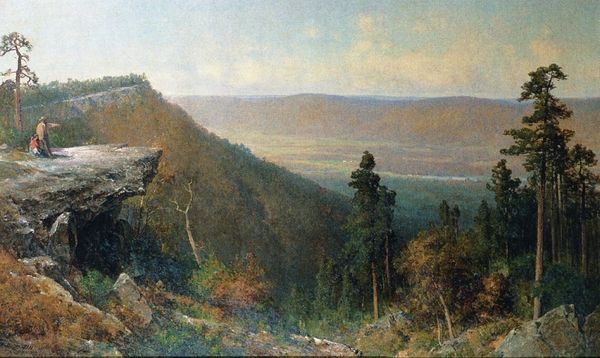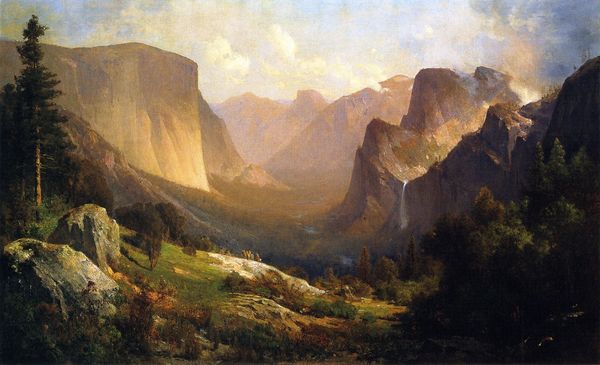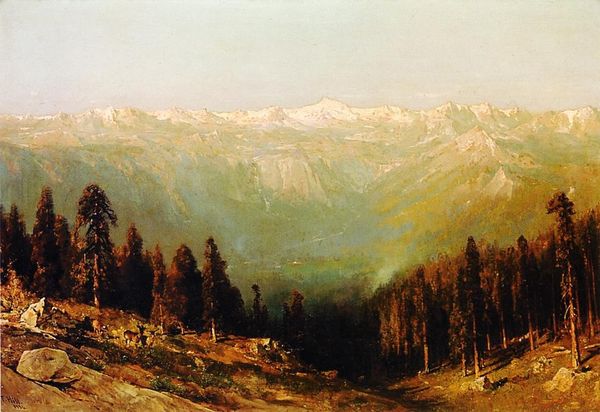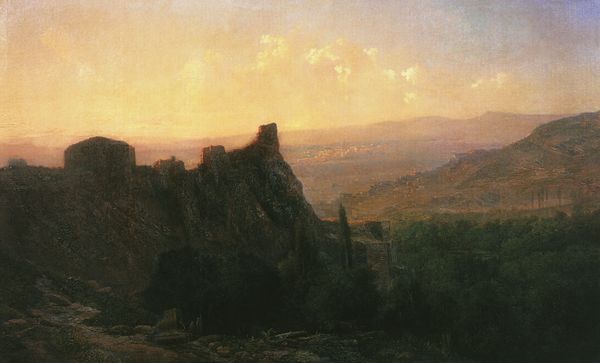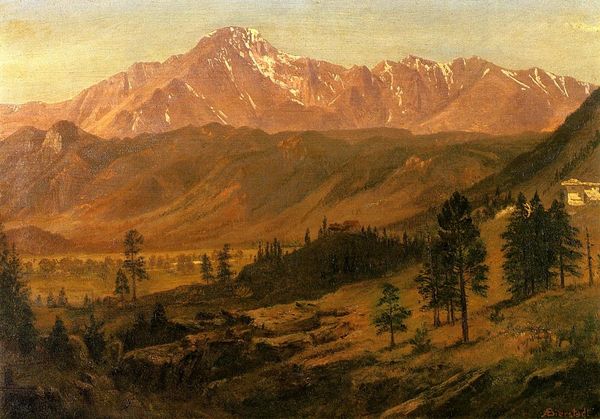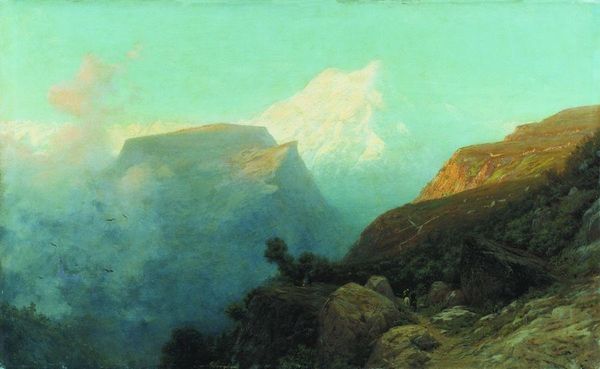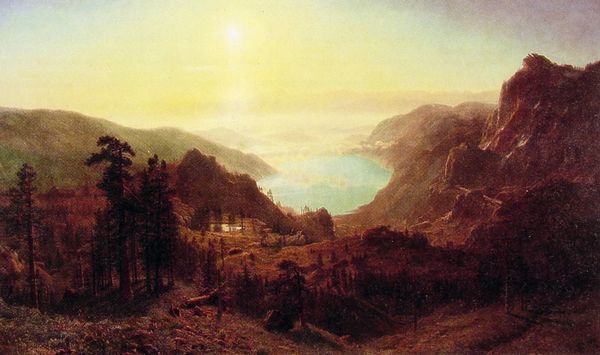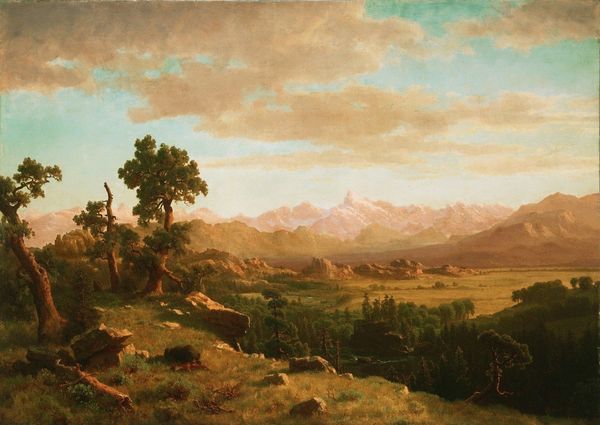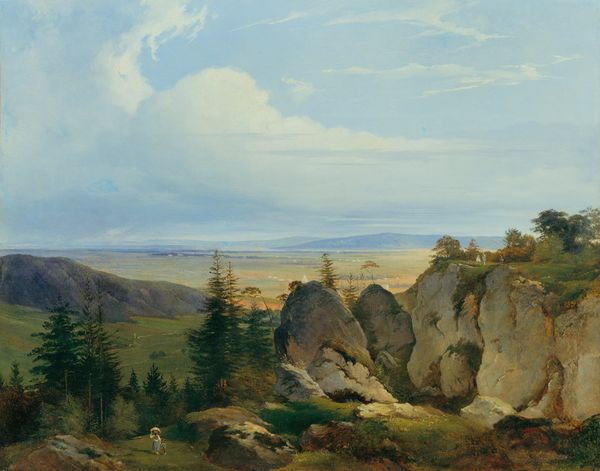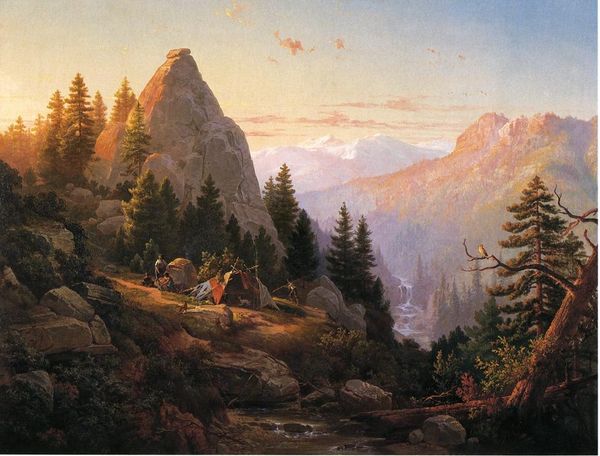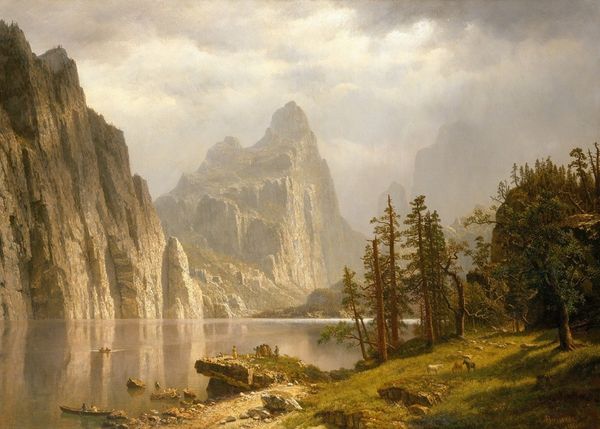
Dimensions: 33 x 47 cm
Copyright: Public domain
Curator: Immediately, I'm struck by the immensity of the landscape, almost dwarfing any sense of human presence. It feels vast and untouched. Editor: Indeed. We’re looking at Albert Bierstadt’s "Wind River Country," an oil on canvas he completed around 1859. It exemplifies the Hudson River School's glorification of the American West. Consider the cultural moment—Manifest Destiny was fueling westward expansion. Curator: I'm fascinated by how Bierstadt has rendered the rock formations. The textures are almost palpable, created through layers of pigment and subtle gradations of light. What sort of source material or resources were accessible to him during the artistic process, I wonder? Editor: That's a good point to consider. As a work within the cultural context of settler colonialism, “Wind River Country” offers a selective vision of the West. There's no visible labor here, no evidence of resource extraction. Indigenous presence is minimized, contributing to a romanticized, and ultimately false, narrative of empty land available for the taking. Curator: That interplay between perception and production is key. The canvas itself, the sourcing of pigments—all contribute to the material reality of the painting and the worldview it presents. What’s especially striking is the smooth rendering; his laborious brushwork yields such an idealistic composition, blurring how this “untouched” landscape inevitably became a product through Bierstadt's hand. Editor: Precisely. By framing the land as both sublime and vacant, these works implicitly endorse a specific social order. This is art deployed as ideology, visually reinforcing power structures through representations of landscape. There are no signs of civilization beyond the trees, implying an idealized wilderness void of human impact that serves the economic and cultural incentives of the era. Curator: That pushes me to consider his studio process: Was this based on direct plein air sketches, or perhaps photographs? The smoothness suggests careful, controlled execution. How do you account for these historical inaccuracies, the skewed visions and omissions in relation to our era? Editor: We engage critically with its beauty, acknowledging its technical skill while actively deconstructing the embedded narratives that continue to affect representations of landscape and the politics of space today. Understanding Bierstadt's place in that history demands more nuanced conversations on how these places become landscapes for tourism and extraction, whose economies and values shape entire societies today. Curator: So, through tracing its materiality and unveiling its skewed composition, we hopefully come to reconcile both the skill behind the canvas and these social imprints across these painted vistas. Editor: Right—art as a cultural artifact embedded in a specific time, continually impacting its place across the world.
Comments
No comments
Be the first to comment and join the conversation on the ultimate creative platform.
